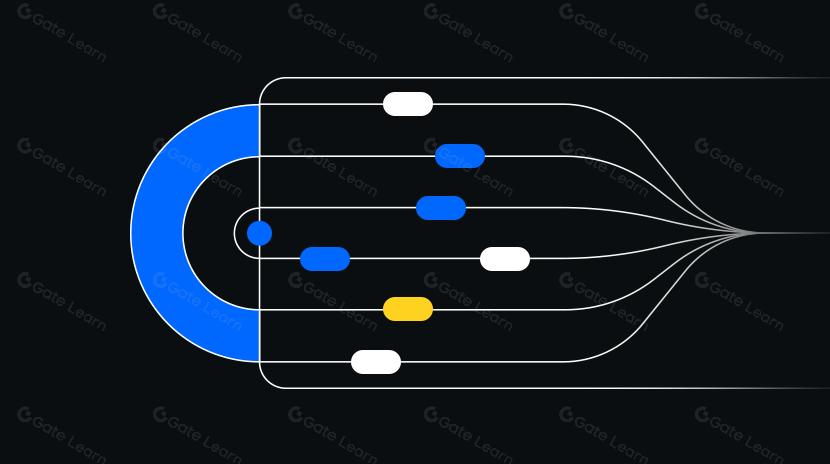Gate Research: Vitalik Unveils Ethereum’s Kohaku Privacy Framework | Bitcoin Whales and Institutions Increase Accumulation
Crypto Market Overview
- BTC (+0.15% | Current Price: 92,410 USDT): BTC found initial support near 91,800 USD on November 18 and saw a brief rebound in the early hours of the 19th, reaching as high as 94,000 USD before pulling back to the 92,500 USD range. Short-term moving averages show mild improvement, with the MA5 and MA10 recovering above the MA30. However, a clear upward trend has yet to be established. The MACD strengthened slightly during the rebound, with a temporary expansion in the histogram, but momentum later weakened, indicating limited buying pressure. If BTC can stabilize above 92,800 USD, it may extend its short-term recovery; a drop below 91,800 USD would increase the risk of further downside.
- ETH (+0.29% | Current Price: 3,109 USDT): ETH stabilized near 3,050 USD and rebounded to around 3,160 USD early on the 19th, showing modest improvement in short-term sentiment. The MA5 and MA10 remain above the MA30, forming a relatively stable short-term structure, though sustained positioning above these levels is needed to confirm continued recovery momentum. The MACD histogram has increased but is flattening out, reflecting moderate but limited buying interest. Holding above 3,120 USD would help ETH maintain a stable short-term range; falling below 3,050 USD could trigger another test of lower support.
- Altcoins: Market sentiment remains cautious, with the Fear & Greed Index at 15, still in the “extreme fear” zone, signaling persistently low risk appetite. Despite the weak overall mood, major altcoins recorded a mild rebound over the past 24 hours. SOL led with a ~7.3% gain, while DOGE, XRP, and ADA posted 2–6% increases, suggesting selective capital rotation and short-term dip-buying under extreme sentiment conditions.
- Macro: On November 18, the S&P 500 fell 0.83% to 6,617.32, the Dow Jones dropped 1.07% to 46,091.74, and the Nasdaq declined 1.21% to 22,432.85. As of 02:15 AM (UTC) on November 19, spot gold traded at 4,059 USD per ounce, down 0.19% over the past 24 hours.
Trending Tokens
XAN Anoma (+50.92%, Circulating Market Cap: $117M)
According to Gate market data, XAN is currently trading at 0.04677 USD, up approximately 50.92% over the past 24 hours. Anoma is a distributed operating system designed for next-generation decentralized applications, enabling programmable privacy, native intents, and cross-chain interoperability across multi-chain ecosystems. Its core component, ARM, is a next-generation virtual machine that provides privacy-preserving computation, intent expression, and complex interaction abstractions for any blockchain, allowing developers to build dApps with greater flexibility and modularity by removing much of the underlying complexity.
Recently, Anoma went live on Ethereum, launching ARM and initiating adapter deployments across the ecosystem, attracting significant market attention. The release of ARM is seen as a key milestone in bringing intent-based and privacy-first architectures to Ethereum, demonstrating the feasibility of Anoma’s DOS model on major blockchains. The combination of network deployment, a clearer technical roadmap, and frequent progress updates has driven a notable surge in market interest and demand for the XAN token.
GRASS (+23.03%, Circulating Market Cap: $149M)
According to Gate market data, GRASS is trading at 0.3386 USD, up 23.03% in the past 24 hours. Grass is a decentralized data collection and compute network that transforms unused bandwidth, compute power, and data contributions from global connected devices into a shared resource layer. It supports open-source AI model training, scientific dataset generation, and distributed computation, enabling users to contribute data to open science and AI research while earning token incentives—creating a “data → models → value” cycle within the ecosystem.
Grass recently announced that its first Token Holder & Network Participant Call will take place on November 24, during which it will disclose business progress, revenue metrics, data growth, AI collaborations, and new roles for the token—fueling early market positioning. In addition, Grass, together with Inference.net and LAION, achieved a major milestone by processing over 100 million scientific papers and generating structured open-science datasets, reinforcing its narrative as a foundational AI data-layer protocol.
FF Falcon Finance (+17.69%, Circulating Market Cap: $347M)
According to Gate market data, FF is currently priced at 0.14844 USD, marking a 17.69% increase over the past 24 hours. Falcon Finance is a decentralized stablecoin and yield protocol built on Ethereum. Its core product, USDf, is an over-collateralized stablecoin designed to be transparent, auditable, and scalable. Falcon focuses on stablecoin issuance, yield strategies, and cross-chain collateral expansion, aiming to establish a more credible and verifiable pegging mechanism through real-time on-chain transparency and open risk monitoring.
FF’s recent gains are largely driven by several ecosystem catalysts. USDf circulating supply has surpassed 2 billion USD—over 300% growth since July—signaling substantial expansion in protocol usage. Meanwhile, the full reveal of the Perryverse NFT series has boosted community engagement and user participation. Falcon Finance also announced its involvement in upcoming Blockchain Week events, further increasing its visibility within the open finance and stablecoin sectors.
Alpha Insights
Bitcoin Whales and Institutions Increase Accumulation as 1,000+ BTC Wallets Hit a Four-Month High
During the recent market correction, both on-chain indicators and institutional behavior point to clear long-term accumulation. Glassnode data shows that Bitcoin whales (holding ≥1,000 BTC) have been buying the dip, with the number of such wallets rising 2.2% to 1,384 — the highest level in four months. This trend suggests that major holders view the current range as a value accumulation zone, stepping up purchases while smaller holders capitulate, creating a classic “retail outflow, whale accumulation” pattern.
At the same time, institutional and corporate holdings continue to expand. Companies now collectively control roughly 14% of Bitcoin’s total supply, indicating that institutional capital is not retreating despite short-term volatility. Instead, they are increasing exposure as part of long-term allocation strategies. The continued rise in corporate and whale holdings reinforces Bitcoin’s long-term supply lock-in effect and reflects deep-pocket investors positioning ahead of the next cycle. Overall, coordinated accumulation by whales and institutions is driving capital migration from short-term traders to long-term holders, laying a structural foundation for future market stabilization and potential trend reversal.
Vitalik Unveils Kohaku, Ethereum’s New Privacy Framework, Advancing Privacy as a First-Class Network Property
At Devcon, Vitalik Buterin officially introduced Kohaku, a privacy-focused framework designed to strengthen privacy capabilities across the Ethereum ecosystem. The open-source toolkit provides modular components that allow developers to build privacy-preserving wallets without relying on centralized intermediaries. Kohaku integrates with established privacy protocols such as Railgun and Privacy Pools, enabling users to conceal fund flows while providing verifiable “proof of innocence” for regulatory compliance. The framework enhances confidentiality across on-chain interactions and strengthens user protection around asset transfers and identity linkability.
In parallel, the Ethereum Foundation announced the formation of a dedicated privacy team comprising 47 researchers, engineers, and cryptographers, signaling an elevated commitment to making privacy a first-class attribute of Ethereum. Vitalik emphasized that “privacy is freedom,” and highlighted Ethereum’s ongoing transition toward more robust privacy infrastructure — including improved zero-knowledge systems, transaction obfuscation, and enhanced user safety. This initiative reflects Ethereum’s push to lead the next stage of privacy technology at the protocol level and solidifies its position within the broader landscape of secure and compliant on-chain computation.
Zama Launches FHE Testnet v2, Signaling Mainnet Readiness
Zama founder Rand announced the official launch of Testnet v2 for the project’s fully homomorphic encryption (FHE) network. As the mainnet candidate version, Testnet v2 already includes the full functionality planned for mainnet, allowing developers to begin building and deploying applications. The team is currently conducting multiple rounds of stress testing to evaluate system stability and throughput under high load. Once testing concludes, Zama will release a broader mainnet-ready test version. According to the team, the initial mainnet deployment will run on Ethereum, prioritizing ecosystem stability before gradually expanding to other chains.
Per Zama’s lightpaper roadmap, the testnet is progressing on schedule, with the mainnet and TGE planned for Q4 2025. The network is expected to expand to other EVM chains in early 2026 and deploy on Solana in the second half of the year. This phased multi-chain strategy aims to ensure that FHE performance, developer tooling, and ecosystem compatibility are fully mature prior to broader rollout. Ultimately, Zama seeks to bring FHE technology to real-world applications ranging from privacy-preserving smart contracts to secure on-chain computation and sensitive data processing.
References
- Gate, https://www.gate.com/trade/BTC_USDT
- Farside Investors, https://farside.co.uk/btc/
- Gate, https://www.gate.com/trade/ETH_USDT
- Farside Investors, https://farside.co.uk/eth/
- Gate, https://www.gate.com/crypto-market-data
- Investing, https://investing.com/indices/usa-indices
- Investing, https://investing.com/currencies/xau-usd
- Glassnode, https://studio.glassnode.com/charts/entities.Min1KCount?a=BTC&chartStyle=column&mScl=lin&pScl=lin&s=1715906842&u=1763337600&zoom=
- The Block, https://www.theblock.co/post/379149/vitalik-buterin-unveils-kohaku-privacy-focused-framework-ethereum
- X, https://x.com/randhindi/status/1990446778068386252
Gate Research is a comprehensive blockchain and cryptocurrency research platform that provides deep content for readers, including technical analysis, market insights, industry research, trend forecasting, and macroeconomic policy analysis.
Disclaimer
Investing in cryptocurrency markets involves high risk. Users are advised to conduct their own research and fully understand the nature of the assets and products before making any investment decisions. Gate is not responsible for any losses or damages arising from such decisions.
Related Articles

Exploring 8 Major DEX Aggregators: Engines Driving Efficiency and Liquidity in the Crypto Market

What Is Copy Trading And How To Use It?

How to Do Your Own Research (DYOR)?

What Is Technical Analysis?

What Is Fundamental Analysis?
